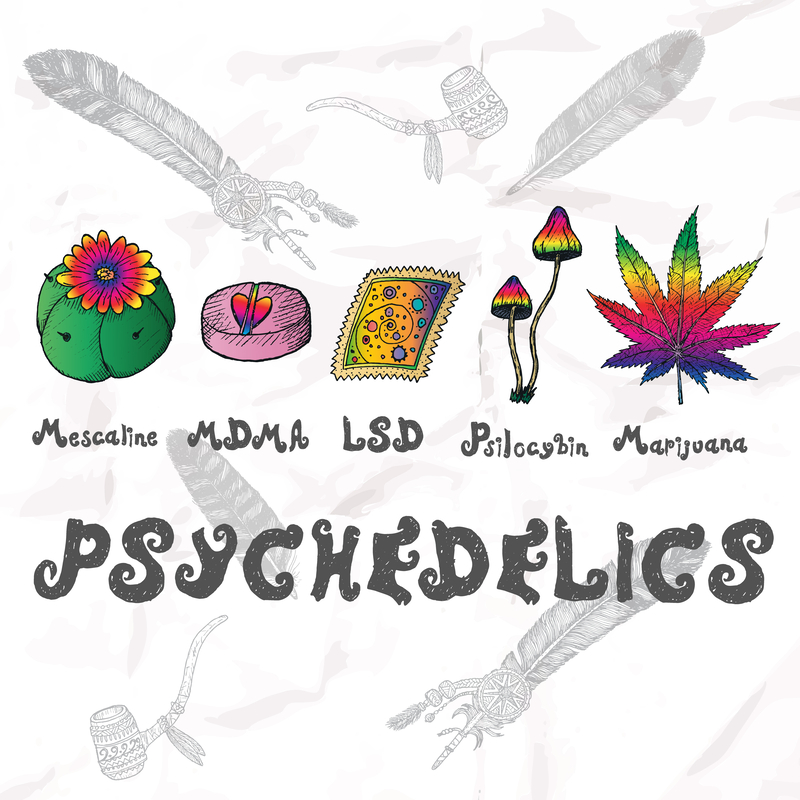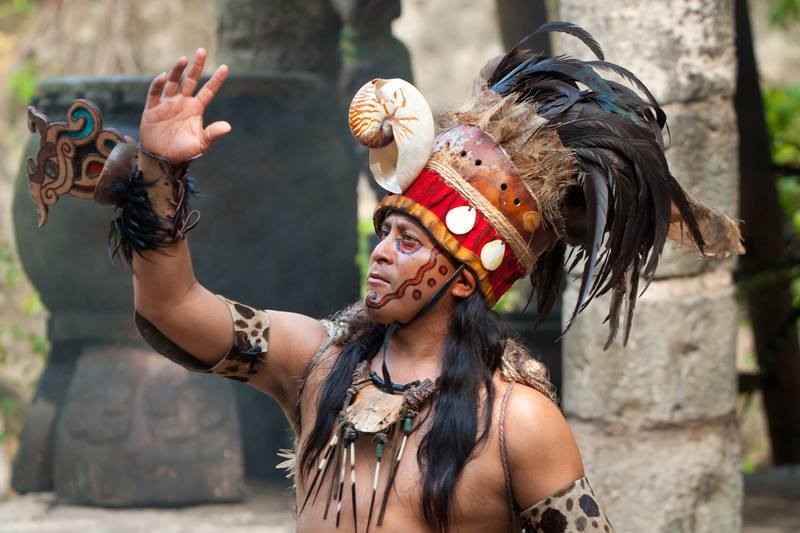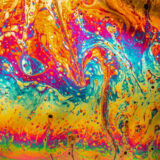
Table of Contents
Understanding the Connection Between Psychedelic Drugs and Religion
Where Do Psychedelic Drugs and Religion Meet?
A lot of research has gone into the use of psychedelic drugs, beginning in the 1960s. This is most famously represented by Aldous Huxley’s “Doors of Perception,” and is a result of the millions of people who began experimenting with psychedelics outside of religion. But fewer research models and literature covers the actual religious use of psychedelics. In reality, the use of psychedelics in religion is as old as mankind itself. From the peyote cactus’s offering of mescaline, to the incredible formulations of ayahuasca DMT concoctions, all the way to the experimentation with nightshades, or even LSA, psychedelics have been a long part of traditional, ceremonial use all around the world. Shamans and ritual goers from all sorts of ancestral times have utilized psychedelics for religious purposes. And while Western culture highlights psychedelics as a taboo topic, religions have established long roots with hallucinogenic substances for thousands of years.
Religions and Cultures Which Use Psychedelic Drugs

Many religions make use of psychedelic drugs. Some popular cultures which use psychedelics for their mind-altering, potentially prophetic, religious properties include Evangelic or monastic Christianity, Judaism, Buddhism, the Native Americans, South Americans, and many indigenous tribes. Almost all continents possess tales of psychedelic drug use for religious or ceremonial purposes. Psychedelic drug use can be found in North America, South America, Europe, Asia, Australia, and Africa. Normally the use of psychedelics in these ancient, religious tribes were for spiritual development. For example, Latin American shamanism has been recently interpreted as a way to understand and involve spiritual aspects of the psychedelic trip, in a literal, real-world facet.
Christianity and Psychedelic Drugs
The root of psychedelic drug use in Christianity spawned from Greece, where the drugs were regularly used to enhance religious ceremonies. Psychedelics were a critical part of early Christian sacraments, and can purportedly still be found in many monastery-esque institutions. Ergot is one of the most common psychedelic substances which comes up in theories as to how psychedelics influenced Christianity. From Ergot, scientists have synthesized LSD. This kind of trip could explain a lot of the crazy Bible verses which talk of miracles, confusion, or unreasonable realistic visions. Although there is plenty of talk in regards to early Christians using psychedelics, there are many Christian institutions around the world which supposedly still engage in regular psychedelic rituals and ceremonies.
Judaism and Psychedelic Drugs
There is such thing as a Judaism psychedelic renaissance. Acid is one of the most common drugs found in Jerusalem psychedelic rituals. They have terms which describe altered states of consciousness, oftentimes involving psychedelic meditation practices. There are many programs which initiate the psychedelic transformation of an individual into another state of mind, where they might have a better connection with themselves and God. Many practicing Jews will speak of “psytrance events” by which they take psychedelic drugs to become closer to God. This is especially true throughout modern Judaism, where items like MDMA and psilocybin (a component found in psychedelic mushrooms) are becoming more prevalent and popular.
Buddhism and Psychedelic Drugs

The Buddhists believe in an “enlightened state” which can be achieved in many ways, including the use of meditation or psychedelics. In fact, many Tibetan schools even practice an art known as psychedelic meditation. The Buddhist emphasis on the dying state is a parallel to the experience exhibited in death, by which the body releases a surplus of DMT to help make the transition easier. They detail the feeling of possessing “no images, concepts, or visions” and claim there is no discernible content, but instead peace, tranquility, and enlightenment. The Buddhists are notorious for believing in “invisible worlds.” They interpret the relationship between psychedelic drug use and other worlds as a gateway. They are especially notorious for explaining the “white light” that occurs during spiritual ecstasy as a revelation, or a non-identifiable consciousness within the body. Sometimes they explain this phenomenon as an out of body experience, an experience of past lives, or the awareness of the vastness of the Universe. They sometimes use psychedelic drugs to experience insight into nature, or to find remedies for the suffering. This is not far off from other shaman-type applications of psychedelics, which will mostly be discussed in the South American utilization of the substances.
The Native Americans and Psychedelic Drugs
Although the Peyote cactus is used by millions of people for its recreational value, it was first donned as a religious cactus, considered precious and sacred. This is also true for the San Pedro cactus. Both cacti possess a psychedelic compound known as mescaline. Mescaline is the substance responsible for the psychedelic, spiritual trips many Native American and Mexican tribes use to alter their state of consciousness. It is even legal for many of these tribes to use mescaline, as it is their religious right. And while there are groups within these cultures who strongly purport the substance is purely for recreational use, it is a long part of ceremonial and religious tradition which cannot be ignored.
South Americans, Latin Americans, and Psychedelic Drugs

The South Americans are notorious for using psychedelic drugs to treat the suffering. Oftentimes, Shaman will undergo a psychedelic trip as a way to find a cure to an illness, or to “take the suffering” from an individual. Sometimes they will “prescribe” psychedelics to a suffering victim in an effort to cure or relieve them. This is very common with the Ayahuasca concoction made from DMT. Latin America is no different, posing in their shamanistic practices that the Amazonian ayahuasca can lead to visionary components. DMT is regularly used in Latin America to give Shamans visions of the past, present, and future. Some Shaman are considered doctors in these regions, and the population will regularly turn to them for remedies and knowledge which is obtained when the Shaman uses DMT. In fact, psychedelic drugs are a regular part of many shamanic ceremonies and rituals. Some individuals claim that the South American and Latin American shamans utilize DMT and psychedelics far better than any other culture, as the Shaman and the suffering individual will sometimes use the substance together and arrive at important spiritual conclusions together.
Africa and Psychedelic Drugs
An African Shaman is not too different from the South American shaman which use psychedelics to try and treat, cure, or prevent illness. While there is little evidence that supports these tactics work, there are thousands of anecdotal experiences which claim psychedelics, such as those taken in South America or Africa, can relieve pain, treat pressure and stress, or cure a number of ailments. Ibogaine is one of the most popular psychedelics used in Africa, acting as a stimulant to some extent. In modern culture, African religion will even make use of unnatural, synthesized substances such as LSD.
New Age Philosophies and Last Words from the Botanical Shaman
With the uprise of better understanding and research surrounding psychedelic drug use, Western culture is beginning to remove the stigma behind hallucinogenic drug use. There are even ads popping up which purport the use of psychedelics in micro doses to treat common disease, ailments, and conditions. While these philosophies are still young and strongly malleable, they pay credence to the concept that psychedelics have purpose, use, and are not as taboo as they were once believed. Could there be a connection between divine revelation and the use of psychedelic drugs? While this mystery is still unresolved, it is clear that the modern world is finding real world solutions for the use of such substances, and that the religious ancestors of the past were not far off in their determining psychedelics possess incredible value.





